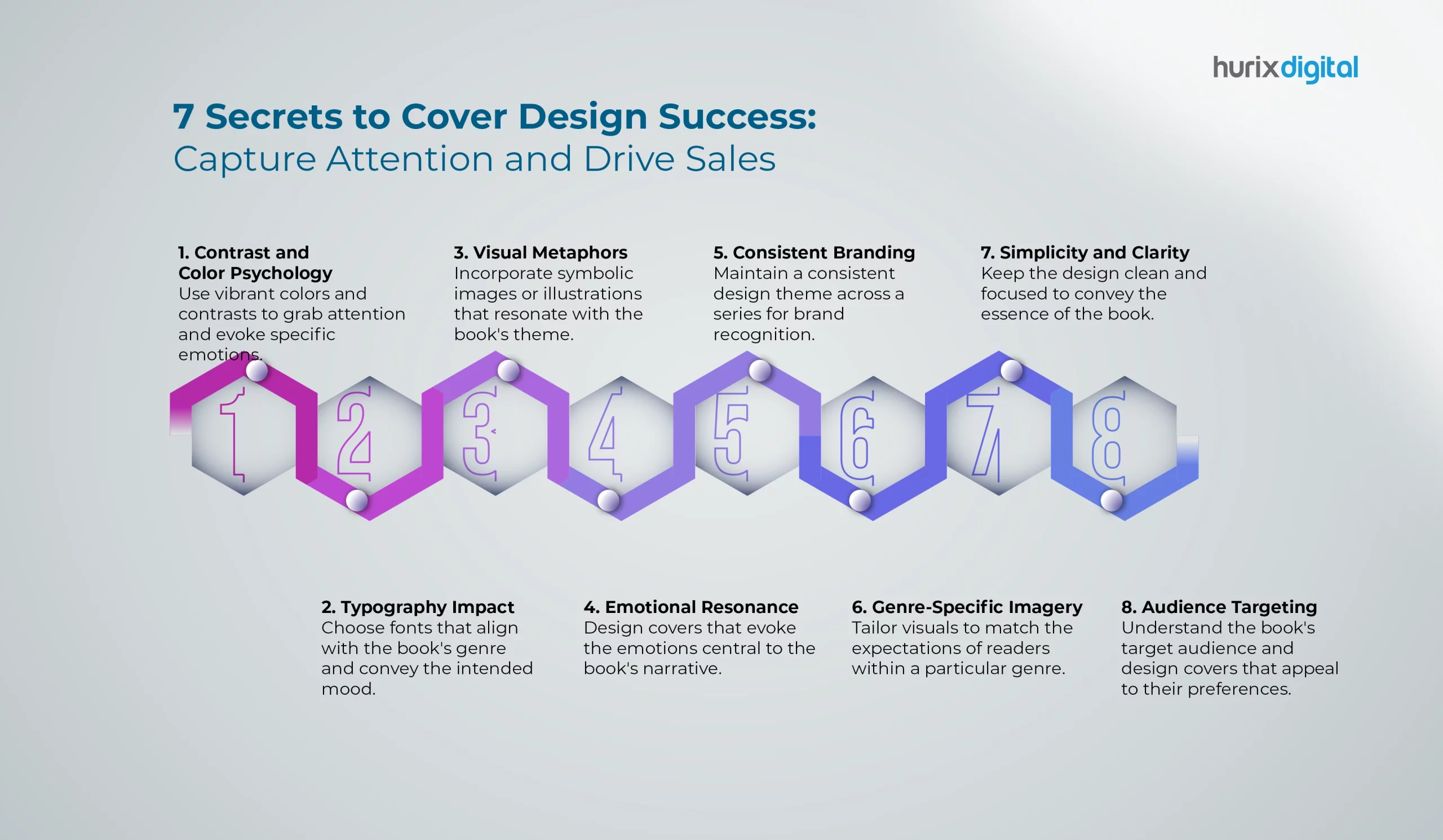Designing an eye-catching cover that converts readers into buyers is an art form. The cover is the first impression that ignites interest and compels action. Follow these 7 secrets from the pros at Hurix Digital to craft a cover that captures attention and drives sales. From choosing the right imagery and fonts to using negative space and the power of color psychology, this quick-start guide arms you with the knowledge to make your cover irresistible.
What are you waiting for? Contact us to get started and watch your sales soar.

The Importance of Cover Design in Publishing
Cover design is a critical element in the success of any book. A well-executed cover not only attracts potential readers but also reflects the essence of the content within. By focusing on key aspects of cover design, authors and publishers can significantly enhance their book’s marketability.
Key Aspect 1: Understanding Color Psychology
Color plays a fundamental role in cover design. Different colors can trigger specific emotions and responses in potential readers. For instance:
- Red often signifies passion or urgency.
- Blue evokes calm and trust.
- Green conveys growth and tranquility.
Selecting the right colors can help communicate the book’s themes and engage the target audience emotionally.
Key Aspect 2: The Role of Typography
Typography is another essential component of cover design. The choice of font can convey the genre and tone of the book. For example:
- Serif fonts may evoke a classic or literary feel.
- Sans-serif fonts are often perceived as modern and clean.
It’s crucial to ensure readability while aligning the typography with the book’s message.
Key Aspect 3: Consistency in Branding
For authors with multiple titles, maintaining consistent branding across covers is vital. This helps establish a recognizable identity. Elements to consider include:
- Use of similar color palettes.
- Consistent font choices.
- Unified imagery styles.
This approach can foster reader loyalty and encourage purchases of other titles by the same author.
Conclusion
Cover design is more than just an aesthetic choice; it serves as a marketing tool that can influence sales and readership. By focusing on color psychology, typography, and branding consistency, authors and publishers can create covers that not only capture attention but also resonate with their audience. Prioritizing these design elements is essential for driving sales and achieving success in the competitive book market.




